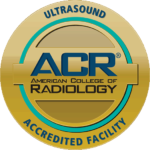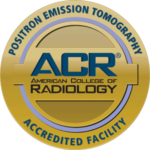
At UDMI, we have the latest in MRI technology with our 3T Magnetic Resonance Imaging (MRI) – the Siemens MAGNETOM Vida 3T. This new 3T MRI increases our confidence in the diagnosis because of its outstanding image quality and improves our patients’ experience.
Benefits
- Improved image quality. Twice the signal-to-noise ratio as a 1.5T MRI.
- Decreased scan time. Parallel imaging techniques reduce scan time.
- Increased relaxation rates. Improvement in blood vs. background tissue contrast.
- Increased spatial resolution. Higher spatial resolution and decreased slice thickness results in improved image clarity and diagnostic capabilities
- Increased magnetic susceptibility. Increased sensitivity to hemosiderin (iron)
- Improved spectral resolution.
- Greater contrast sensitivity. Depending on the study, less contrast may be used or the same dose may improve contrast-to-noise ratio.
- Improved effects of fat saturation. Effects of fat saturation are improved because of stronger chemical shift between fat and water.
- Higher temporal resolution. Decreased scan times help reduce data artifacts related to breathing and patient motion, which allows for improved scans in debilitated patients.
- Wider Bore. 70cm (about 27.5 inches in diameter) opening – 4 inches greater diameter than other 3T MRIs and up to 20% larger than older MRI machines. Most claustrophobic patients can tolerate the exam given wide bore and quicker scan times.
- Spectroscopy.
Improved Clinical Imaging

Orthopedic Imaging:
Enhanced detection of articular cartilage tears, tears of shoulder and hip labrum, triangular fibrocartilage complex tears of the wrist, and diagnosis and staging of various derangements of the knee and elbow with significant artifact reduction. This allows for better imaging of bone tumors with more uniform suppression and at a higher resolution.

Cardiac Imaging:
Better visual delineation of blood flow through the heart to evaluate perfusion abnormalities and cardiac ischemia.We are able to perform comprehensive 2d routine cardiac applications, ranging from morphology and ventricular functions to tissue characterization.

Angiography:
Greater background tissue suppression and higher visibility of contrast in the vascular structures creating better signal in the vessels. Small vessel visualization is also vastly improved.
The machine also has more noncontrast angiographic applications, inclusive of lower and upper extremities.

Body Imaging:
Fast, high-resolution 2D and 3D images are made possible for the abdomen, pelvis, colon, MRCP, kidney, and urography.

Neurology:
Higher resolution imagery of brain intricacies to evaluate and diagnose neurological conditions including detection of ischemic lesions in acute stroke, cerebral embolisms, brain hemorrhage, and cerebral blood flow. Ability to perform spectroscopy to analyze neurological disorders. We now also have advanced protocols for diffusion imaging, perfusion imaging, and fMRI.

Breast Imaging:
Improved detection and characterization of breast cancer because of the machine’s improved spatial and temporal resolution. Quicker scan times allow for better patient comfort and satisfaction.

Prostate MRI:
Visualization of prostate gland structures offers a non-invasive and highly accurate exam for early detection of prostate cancer, with better resolution and quicker scan times than previously performed on the 1.5T machine. The exam does not require the insertion of an endorectal coil.

Liver (New Capability!):
Non-invasive liver iron and fat quantification to assess progression of known liver conditions.














